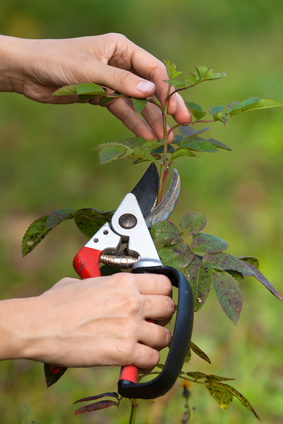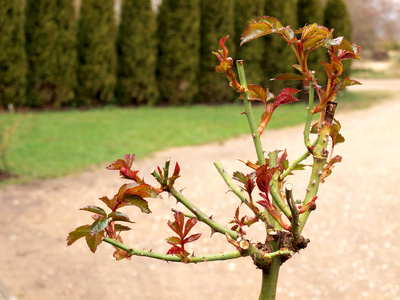July and August are the two main months for pruning roses in New Zealand so I am going to cover some of the principles of pruning roses. If you are looking for some hands on tuition and advice on how to prune certain types of roses, rose pruning demonstrations have been organised around New Zealand so check www.nzroses.org.nz for the one closest to you. They are free to attend and you can learn from local experts in your area.
Back to pruning roses, the first question is do we actually have to prune? First, why do you need to prune your roses? Why not leave them to their own devices. Well, you need to prune in order to encourage more growth and hence more blooms – the reason why we grow them in the first place. It also helps to shape the plants as well.
 Pruning roses is also very easy to do. It is impossible to kill a rose just by pruning it incorrectly and you probably deserve a medal if you do. The worst thing that sometimes happens is that it sulks for a while before coming right so nothing too much to worry about. Roses are very forgiving plants so don’t be afraid to give it a go.
Pruning roses is also very easy to do. It is impossible to kill a rose just by pruning it incorrectly and you probably deserve a medal if you do. The worst thing that sometimes happens is that it sulks for a while before coming right so nothing too much to worry about. Roses are very forgiving plants so don’t be afraid to give it a go.
For pruning roses, you will need a good pair of secateurs that you find comfortable to use. For larger canes, a pair of loppers or a pruning saw will come in handy – pruning saws are especially useful as they can reach into quite tight areas down low that loppers may not be able to get into. A good pair of gloves will also save your hands from catching a few thorns while a small wire brush is useful to give the basal unions a light scrub to remove flaky bark, lichen and moss. This helps promote new shoots but be careful not to rub any off already growing.
Some ties will come in handy if you are pruning standard or climbing roses. Make sure your tools are sharp before you start as that helps to keep cuts sharp and not result in
It is best to prune your roses on a dry day, rosarians say these days are the same when you can get your washing dry outside. The reason behind this, apart from being more comfortable than pruning in the rain, is that spores that cause silver leaf disease are more prevalent in the air on damp days.
 When making your cuts on any type of rose, make sure they slope back and away from the bud which will burst into growth in spring. If you are removing large canes from the base, cut them off flush with the bud union and do not leave any stubs behind as this will encourage die back. It is actually a good idea to make any large cuts in the autumn when silver leaf spores are not around.
When making your cuts on any type of rose, make sure they slope back and away from the bud which will burst into growth in spring. If you are removing large canes from the base, cut them off flush with the bud union and do not leave any stubs behind as this will encourage die back. It is actually a good idea to make any large cuts in the autumn when silver leaf spores are not around.
When you are done pruning roses, you do not need to apply pruning paste or similar to the cuts. It is best just to leave Mother Nature to heal them herself. Rose pruning’s should be disposed of in the rubbish or burnt – do not compost as this will lead to disease problems later on. The same applies to any fallen leaves which you must pick up after pruning. A little effort now will reap rewards later with less disease.
In the garden for July
- It’s pruning time all month and into August. Once pruned, give the soil a forking over and pick up any fallen debris.
- Continue to plant new seasons roses. If the soil is too wet, you can either hold it in the container it was purchased in or if bare root, heal into a corner of the garden.
- Get a winter clean up spray of copper applied to your roses but leave it a few days after pruning.
By Hayden Foulds
Hayden also serves as Deputy Chairman of the World Federation of Rose Societies Rose Trials Committee amongst other rose endeavors.










Join the Discussion
Type out your comment here:
You must be logged in to post a comment.